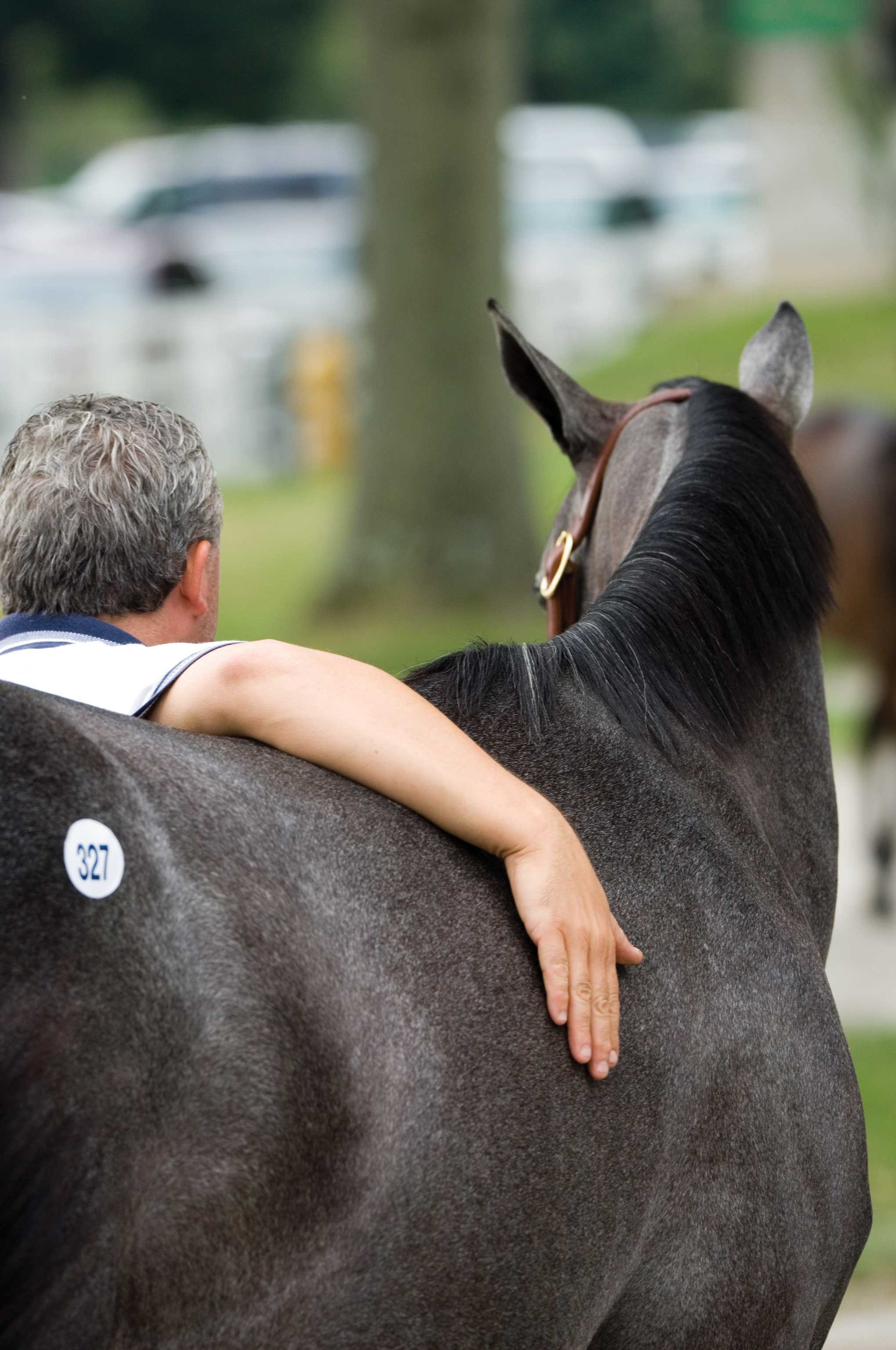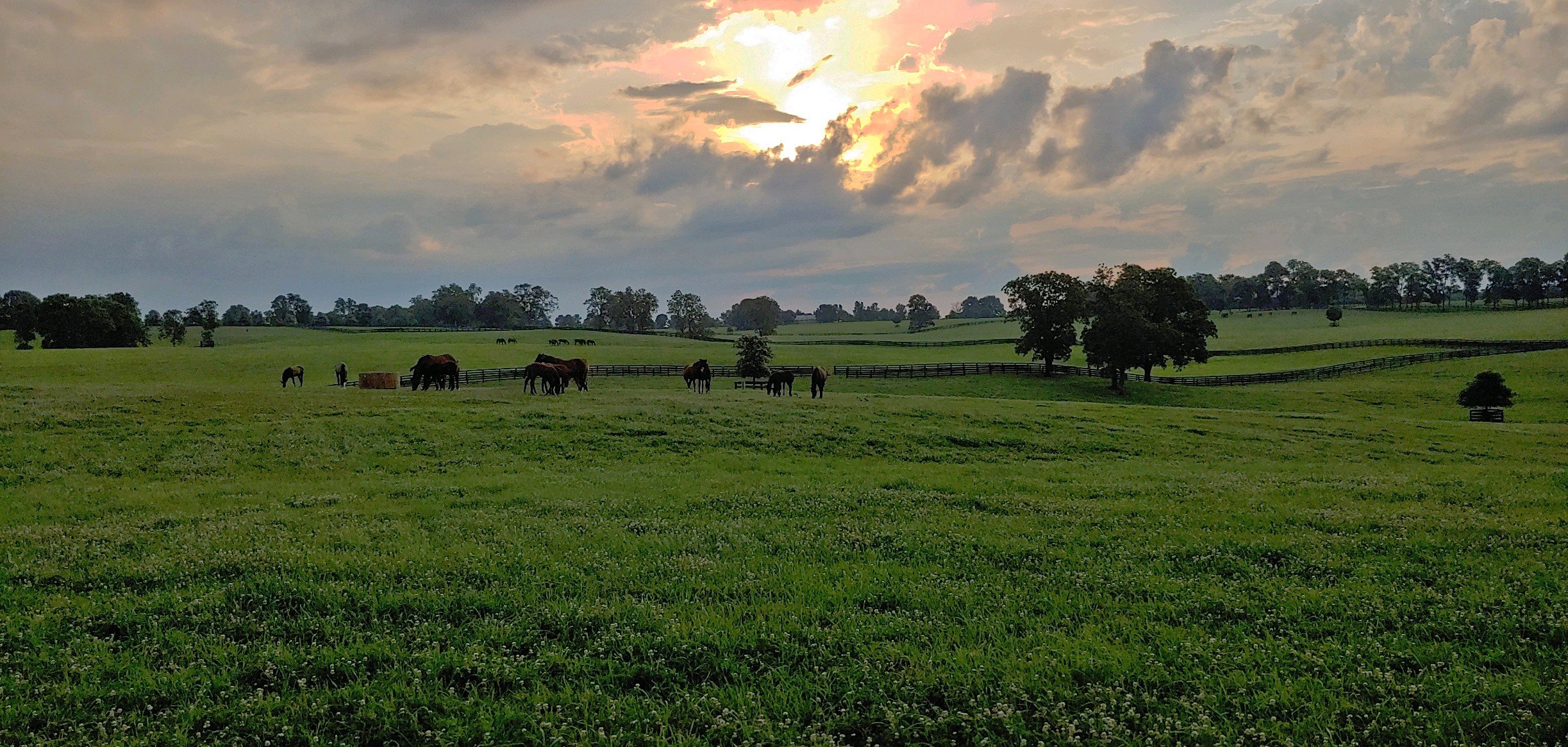
The Basics of Horse Boarding For Raising Thoroughbred Racehorses
The Mill Ridge Way
Raising a horse of any kind is a labor of love, but raising a thoroughbred racehorse balances the timeless methods of both art and science. Creating a champion takes nuance and expertise passed down from generation to generation, on the part of both human and horse.
At Mill Ridge Farm, we’ve spent generations cultivating the perfect environment for racehorses to develop their full potential. We raise thoroughbred racehorses from birth until just about two years of age, when they’re ready to learn to be ridden. A significant part of the horse’s racing potential is formed before a saddle ever touches its back.
Our 900-acre farm was founded by Alice Headley Chandler in 1962, who started Mill Ridge with just four broodmares left to her by her father, Hal Price Headley. Just three years later, in 1965, Alice foaled Sir Ivor, who would become the first American bred sold at public auction to win the Epsom Derby. Sir Ivor is regarded as one of the greatest racehorses of the 20th century, and the methods Alice deployed in his upbringing have continued to produce champions at Mill Ridge Farm for the nearly 60 years since.
Alice spent her whole life working to understand horses. “Take care of the horse,” she said, “and it will take care of you.” We take pride in that legacy, and we live it out every day.
We must be doing something right. We produce Grade 1 winners at a rate 2.5 times the industry average. A thoroughbred is born with less than a 1% chance of ever winning a Grade 1 race, but Mill Ridge has produced 36 Grade 1 winners since the year 2000. That includes eight Breeder’s Cup Champions and the 2005 Kentucky Derby winner, Giacomo.
However, talented horses are born, champions are raised. To do so, you need a facility with a team who understands the unique needs of thoroughbreds. Think of Olympians who compete on the world’s stage. Thoroughbreds need more than a basic horse boarding facility can provide, just like an Olympian needs specialized development, training, care, and nutrition to meet their potential under the pressure of the Olympic spotlight.
Thoroughbred racehorse raising and boarding for every stage of life
Raising a winning thoroughbred racehorse requires a balance of nature and nurture. An elite thoroughbred nursery brings out the best of a horse’s natural talents—its competitive drive, trainability, athleticism, and intelligence.
Our traditions and time-honored methods set us apart. From our stewardship of the land to our boarding practices, we let horses be horses. With the wisdom developed over six generations of horsemen and women, we know what they naturally need at every stage of life.
The Kentucky Landscape
Kentucky’s history of strong racehorses has its roots in the soil itself.
The “Inner Bluegrass” counties of Kentucky contain soil that is rich in limestone, which carries bone-strengthening calcium that makes its way into the grass our horses eat every day. If you think about a thousand-pound horse galloping at full speed, that’s a lot of force and pressure on the horse’s legs. Strong bones are key to a horse’s longevity on the racetrack.
Today, we populate our pastures with a blend of bluegrass and orchard grass, and we work diligently to keep harmful strains of grass and foliage from taking root on our farm. Our farm still partners with the Gluck Equine Research Center at the University of Kentucky to continue providing the best natural ecosystem possible for young racehorses.
Kentucky’s hilly terrain makes a difference, too. As our foals chase each other up and down the rolling hills, they’re building their racing muscles and bone density. The uneven ground builds the supporting ligaments and stabilizing muscles, producing a substantial racehorse.
We Let Horses be Horses
We’ve noticed that mother nature tends to know what she’s doing, so we lean into that. We turn our horses out for long periods of time, and we let them play in the summer heat and winter snow, just like they would in nature.
A group of young racehorses isn’t so different from a group of middle school-aged boys, constantly roughhousing and badgering one another (they don’t call it “horsing around” for nothing). You can tell right away that they are born to compete.
As they shove, bite, and squabble, they learn communication and boundaries. More importantly, they foster a competitive spirit. Shielding horses from these knocks and bumps diminishes those traits in a horse. As we like to say, there’s a “right” number of bite marks on a horse that shows they are competitive learners.
They have no idea yet, but they are champions, preparing to take their place in the winner’s circle.
A Winning Team
Remember, we’re not just raising horses. We’re raising racehorses — finely-tuned athletes that will compete at the highest level. It takes a team of specialists to help a horse fulfill its potential.
Grooms handle the daily care of each horse by feeding and watering them, brushing them, cleaning their stalls, and anything else the horse might need.
Management examines each horse daily for bumps, cuts, and runny noses to make sure they aren’t signs of something more serious.
Veterinarians work closely with management to maintain regular vaccination schedules and pinpoint the best days to breed a broodmare to a stallion. The veterinary team can include a roster of experts like surgeons, acupuncturists, and reproductive specialists.
Farriers maintain the hoof health of a horse and produce thoroughbred-specific horseshoes for them.
Chiropractors keep the joints of the horse properly aligned, which is a constant job considering all the running and jostling of young horses. It might sound surprising, but horses love a visit to the chiropractor.
Our team communicates and works together so that everyone stays on the same page about every horse’s health. These relationships tend to be long-lasting — for example, we’ve worked with our blacksmith team for over 30 years — and that effectiveness compounds as specialists gain exposure to other disciplines and gain a more holistic understanding of the horse.
Choosing a Thoroughbred Racehorse Boarding Facility
When you walk onto the court or campus of a legendary sports team, you can feel it in the air that something is different. It’s more than a coach or a star player or any single factor. On a thoroughbred horse farm, the groundskeepers, the trainers, the administrators, every person is aligned to a singular purpose. A palpable culture of care and excellence permeates the atmosphere. It’s electric.
That’s the atmosphere at Mill Ridge Farm. Everything we do has a purpose.
As you search for horse boarding facilities in Lexington, Kentucky, or elsewhere, we challenge you to find another farm with the legacy, expertise, and approach you’ll find at Mill Ridge.
Wherever you choose, make sure that facility knows what it takes to raise a competitive horse, but also cares for your animal beyond its racing ability.
Tour the farm and pay attention to how the horses look. Are they healthy, energetic, and happy?
Speak to the farm management and ask about the quality of care at the facility, and what makes that particular facility a good choice.
Ask about the feed program and where the facility sources its feed and hay. Inquire about what types of grass they graze on in the pastures.
Make sure you understand the turnout schedule and daily routine of cleaning, care, and watering.
Get a feel for their veterinary team and their routine of care for your horse. Is there anything the facility doesn’t cover that you will have to arrange for?
Ask about foaling. Do they provide 24-hour coverage? How far away is the veterinary clinic? What happens in an emergency?
Once your horse is set up at the facility, how often can you expect updates, and will those updates include photos and videos? What is the farm’s visiting policy?
Of course, understand the cost. Boarding a thoroughbred foal typically costs around $10,000 per year, broodmares cost around $18,000 per year, and a racing-age thoroughbred can cost up to $75,000 per year.
Most importantly, research the horses that have been raised there and how successful they’ve been on the track.
A worthwhile facility will be open and transparent about their operation and will leave you with a sense of confidence and trust.
Remember, it’s not just you who’s at stake. Your horse’s future will be shaped by the environment it’s raised in.
The Mill Ridge Difference
“Take care of the horse, and it will take care of you” — that core belief drives everything we do at Mill Ridge.
Our passion for the horse, the sport, and the land has allowed us to achieve outstanding success. We’d love to have the opportunity to raise your thoroughbred racehorse in our tradition of experience and excellence.

Sign up to receive news and updates from Mill Ridge.




